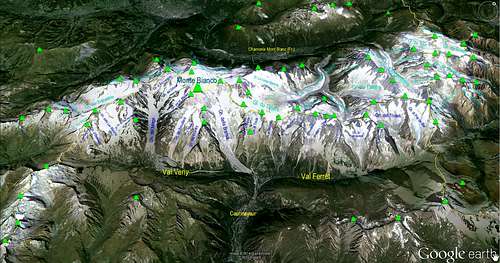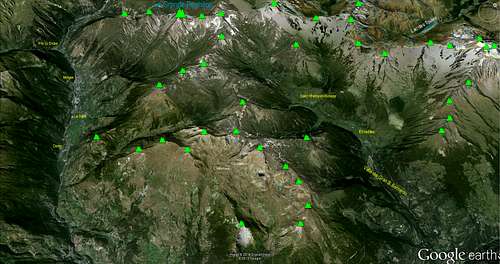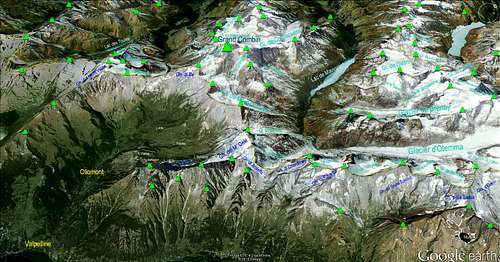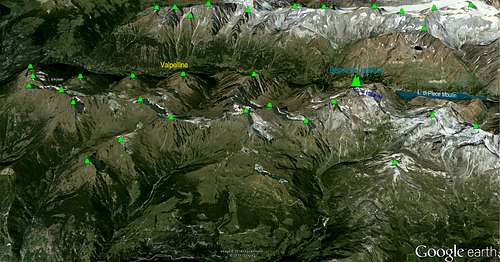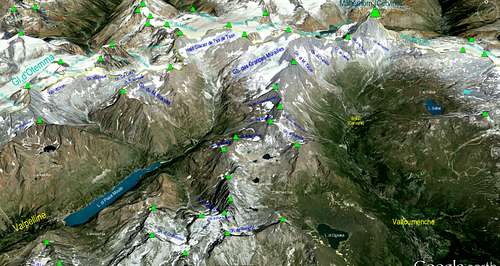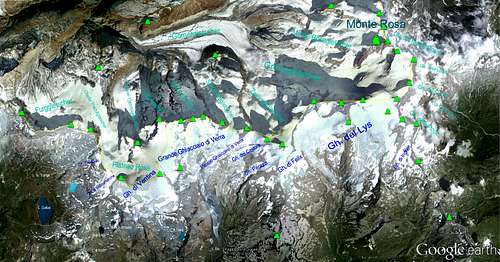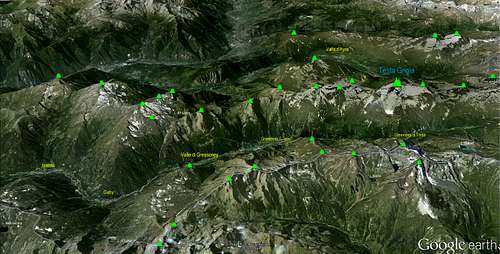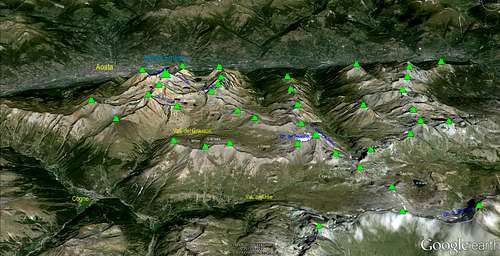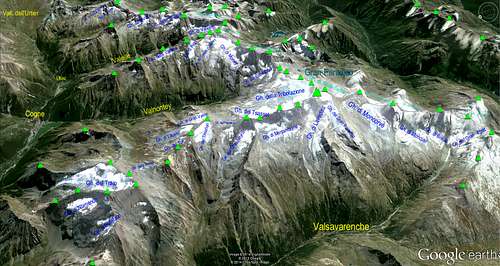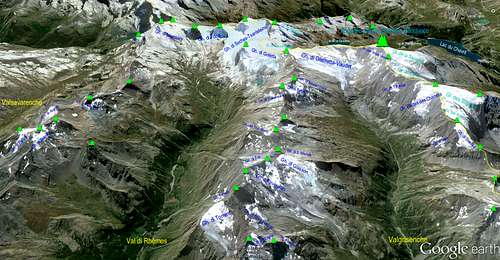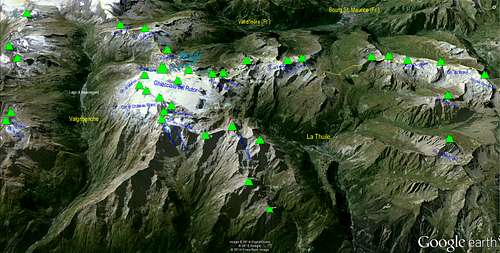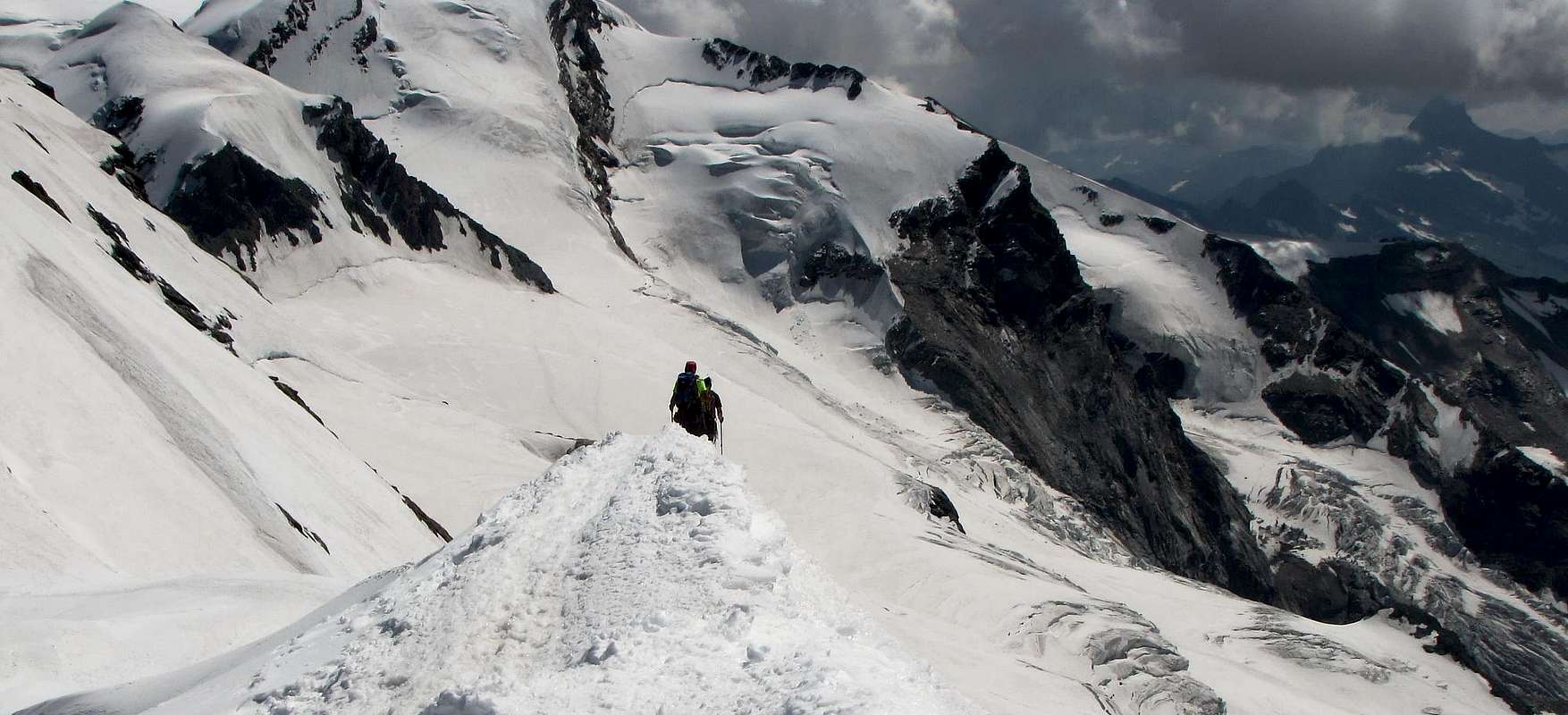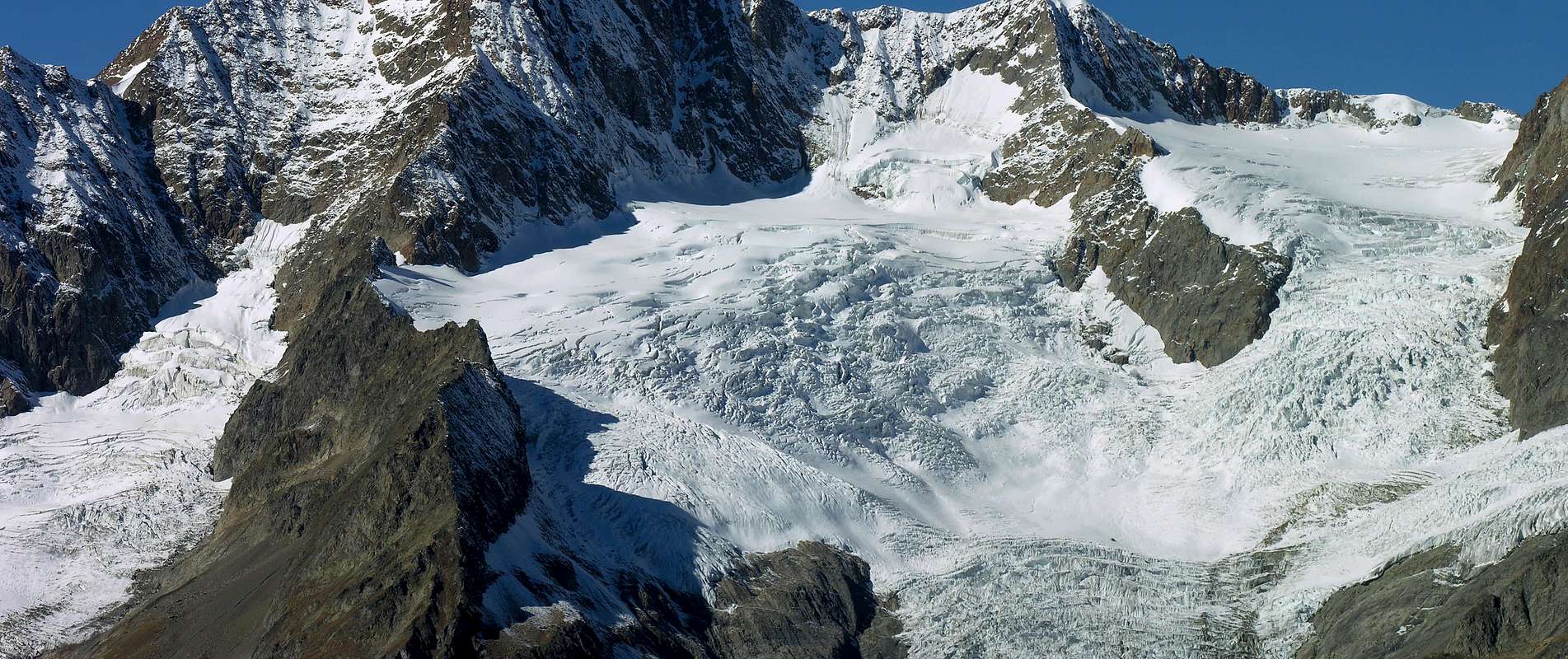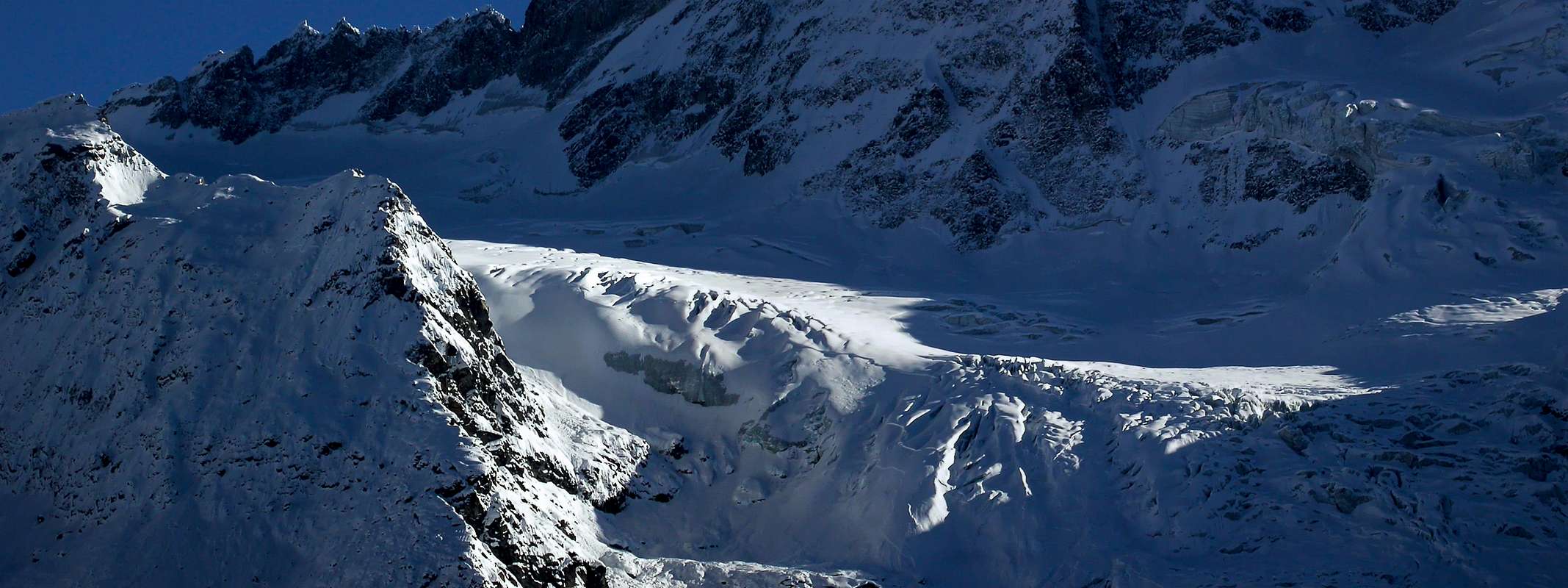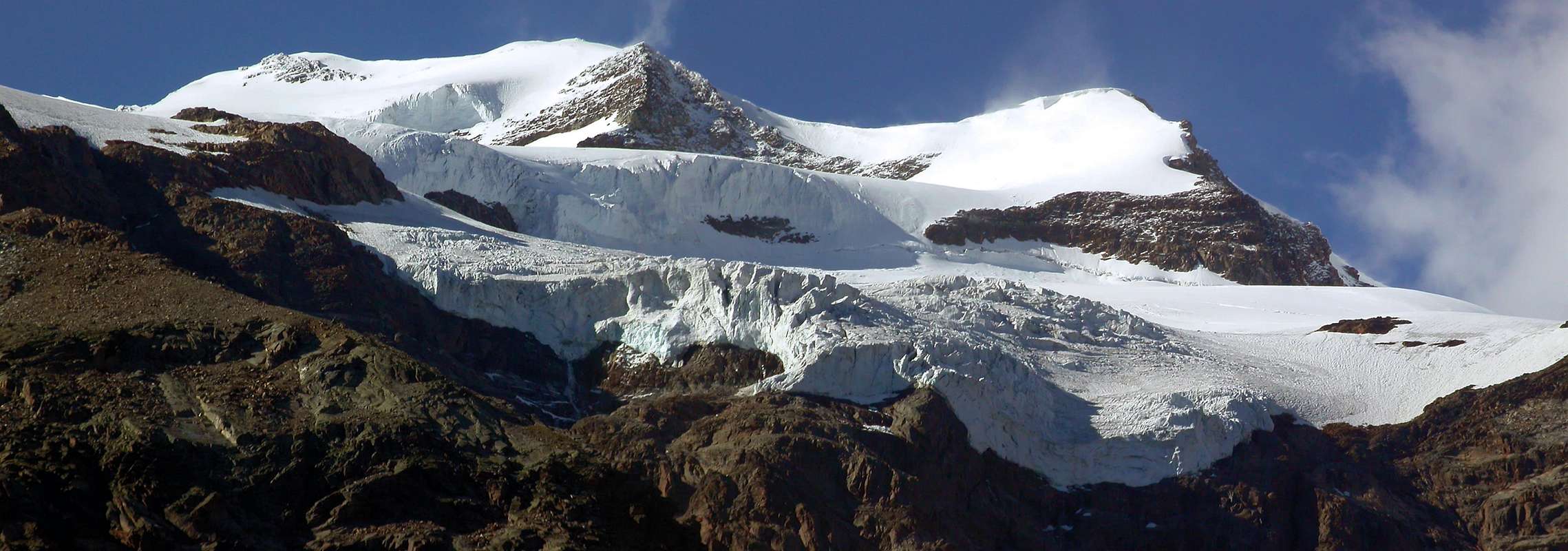-
 5851 Hits
5851 Hits
-
 81.18% Score
81.18% Score
-
 13 Votes
13 Votes
|
|
Area/Range |
|---|---|
|
|
45.73660°N / 7.32138°E |
|
|
Overview

|
A) - In general left or Northern ydrographic of the Central Valley of the Dora Baltea from Courmayeur Resort to Pont Saint Martin:
B) - In general right or Northern ydrographic of the Central Valley of the Dora Baltea from Courmayeur Resort to Pont Saint Martin:
|
A) - Lato idrografico sinistro o Settentrionale della Valle Centrale della Dora Baltea da Courmayeur a Pont Saint Martin:
B) - Lato idrografico destro o Settentrionale della Valle Centrale della Dora Baltea da Courmayeur a Pont Saint Martin:
|
Elementary didactic and methodological instructions to face a Glacier
Insofar we allow us to look out upon some least instructions of base:
A) - Possibly not to face alone never a glacier and therefore untied remembering that the danger also exists going out of few meters of the footstep of base (recent deadly accident to the Breithorns).
Some TERMINOLOGIES of the PHORMOLOGY of the CREVASSES
1) - Crevasse to form of V upset: hold or very narrow in surface it opens to form of cavern during the descent forming, but not necessarily, small formed narrowings, at times, from snowy balconies: very dangerous.2) - Crevasse to form of V upset: hold or very narrow in surface it opens to form of cavern during the descent with a dreadful abyss and with the ice that, to the sight, it changes the color in green, blue and an unfathomable terminal black (personal experience): really very very dangerous and generally lethal.3) - Crevasse to form of U, very wide in superficie and that it tightens him toward the fund: generally less dangerous in case of fall, but also less predictable in the individualization, since it involves an ampler sector of the glacier.4) - Crevasse type transversal: it is unfolded on the transverse axle in comparison to the rope that faces him in slope or in descent; in some situations it is to find effortless her with rapids chain succession, also with the distance of two meters one from the other (draws under les Aiguilles Grises on the Normal Via to the Mont Blanc).5) - Crevasse type longitudinal: prepared on the axle in the shape of arrow the respects to the sense of march; generally rarer, since the plasticity of the glacier has the tendency to break himself along the transverse axle of the same one.6) - Terminal "crepaccia" or bergsrunde: crevasse to the top of the glacial surface, where this goes to finish against the beginning of a wall. He can form some bridges of snow that allow the access the same one; the same can change and of very in the years (for instance to the Aiguille de Talèfre, where up to the Sixties the bridge of access in the Normal Street was to the right entirely situated (West; as from Guide C.AI./T.C.I. "Monte Bianco II°", 1968), while in the Eighties it was completely on the opposite side to around 300 meters distance.7) - Crevasse to form of letter hole: it is also found it where the glacial slant finishes against a crest rocky example Torre di Sant'Andrea to the Apostles into Gran Paradis Group, with personal experience of fall held back by the rope).Elementari avvertenze didattiche e metodologiche per affrontare un Ghiacciaio
Pertanto ci permettiamo di prospettare alcune minimi istruzioni di base:
A) - Possibilmente non affrontare mai un ghiacciaio da soli e quindi slegati ricordando che il pericolo esiste anche uscendo di pochi metri dalla pista di base (recente incidente mortale ai Breithorn).
Alcune TERMINOLOGIE della FORMOLOGIA delle CREPACCE
1) - Crepaccia a forma di V rovesciata: stretta o molto stretta in superficie si apre a forma di caverna durante la discesa formando, ma non necessariamente, piccole strozzature formate, a volte, da terrazzi nevosi: molto pericolosa.Essential BOOKS
"The Glaciers of the Alps", by John Tyndall. Edit. Murray, London, 1860.
"Les Alpes Occidentales", by Federico Sacco. Impr. du Col des Artig., Turin, 1913.
"Formazione dei serbatoi Montani. Considerazioni meteorologiche e geoidrologiche", by Federico Sacco. Borzoni e C., Torino 1918.
"Le Pays de la Doire et son Peuple" di Augusta Vittoria Cerutti, Musumeci Editeur, Juin 1995.
"Variazioni glaciali nel Gruppo del Monte Emilius"-"Glacials Variations in the Emilius Mountain Chain", by Alessandro Giusto Cardellina, pages various. Studies University of Turin, Mathematicals Faculty. Phisic and Natural Sciences/in Natural Sciences Course-Degree, Supervisor Prof. Michele Motta. One's thesis disputed in Turin, Apr 24th, 2009 (unpublished).
External Links
FONDAZIONE MONTAGNA SICURA Villa Cameron, località Villard de la Palud 1 Courmayeur (AO) Tel: 39 0165 897602 - Fax: 39 0165 897647.
REGIONE AUTONOMA VALLE D'AOSTA the official site.


